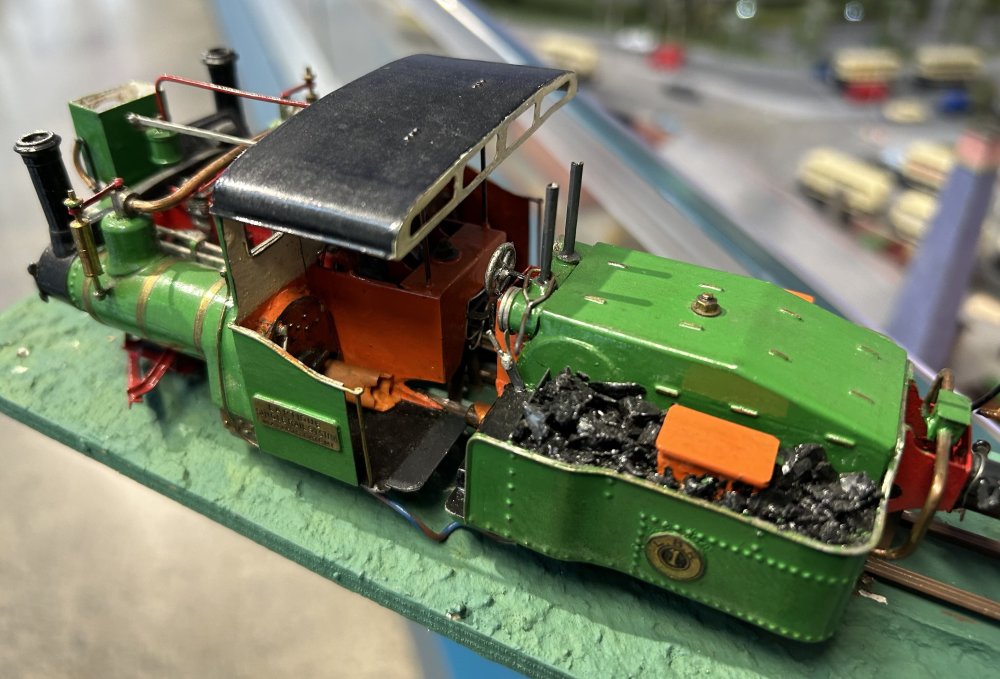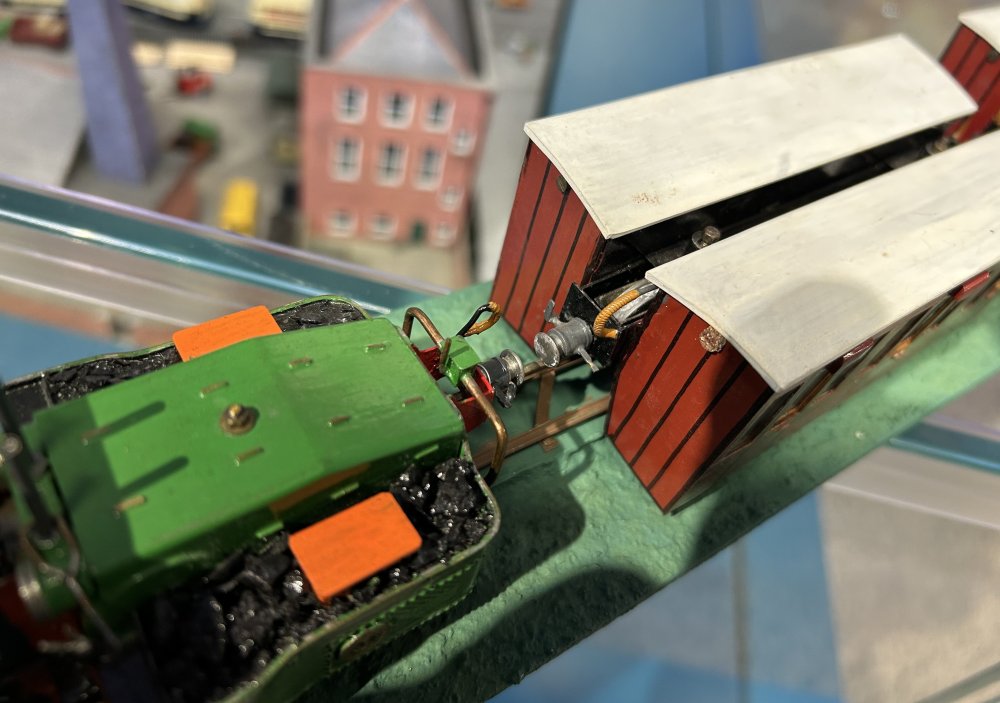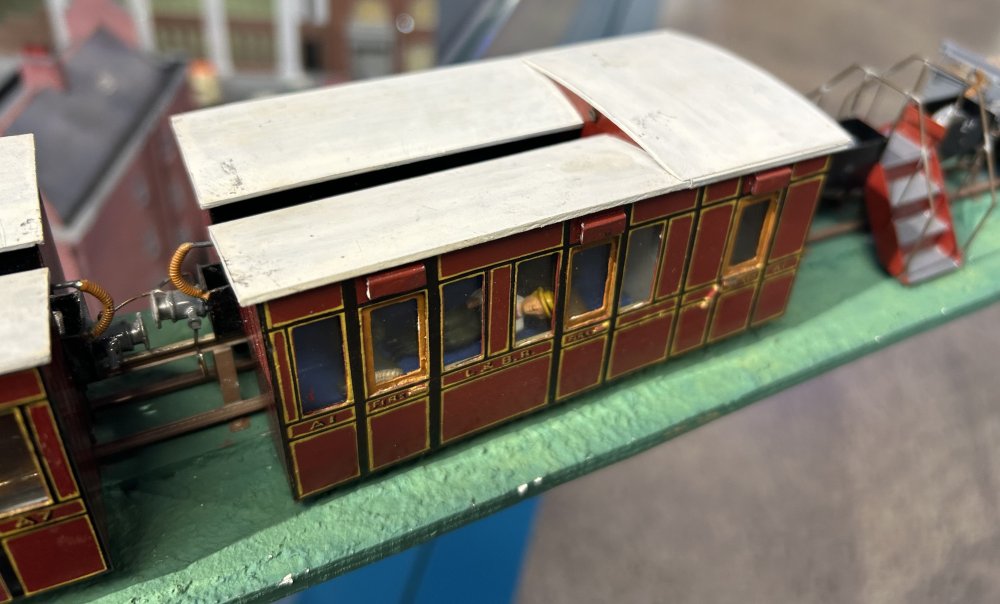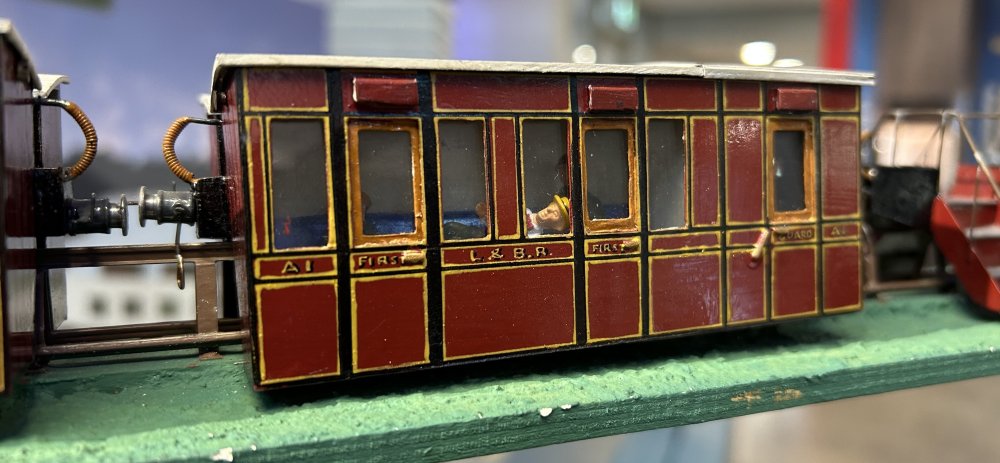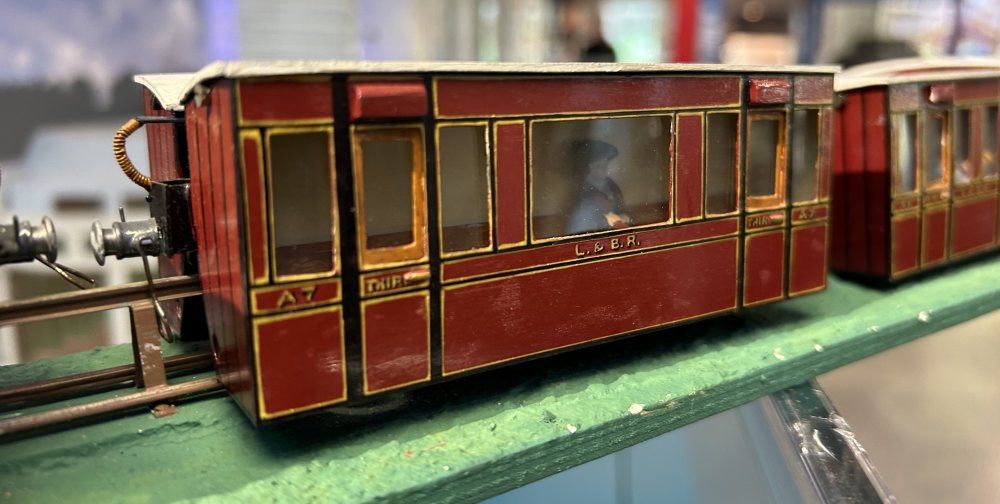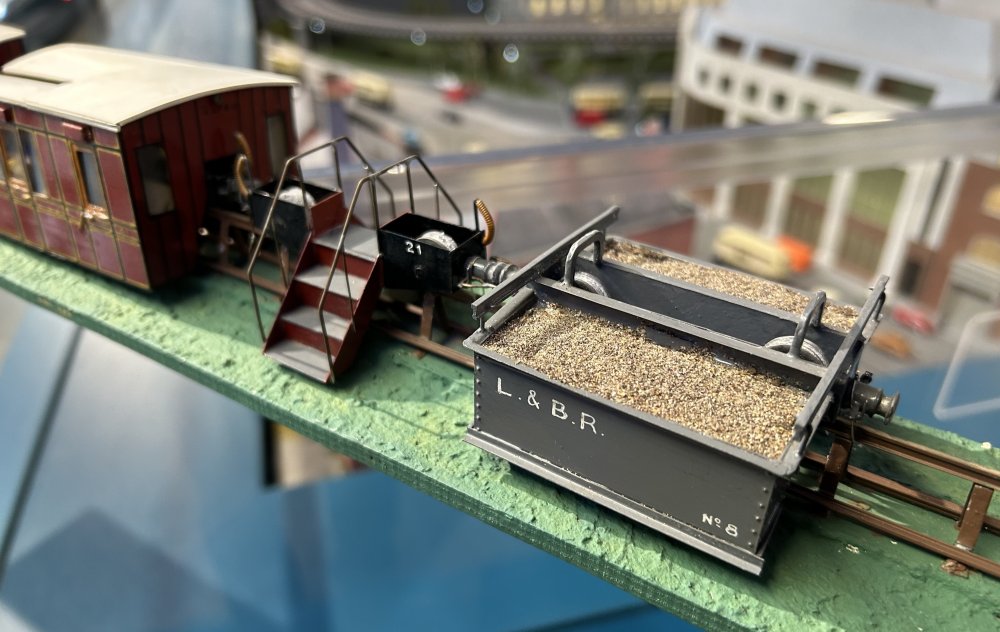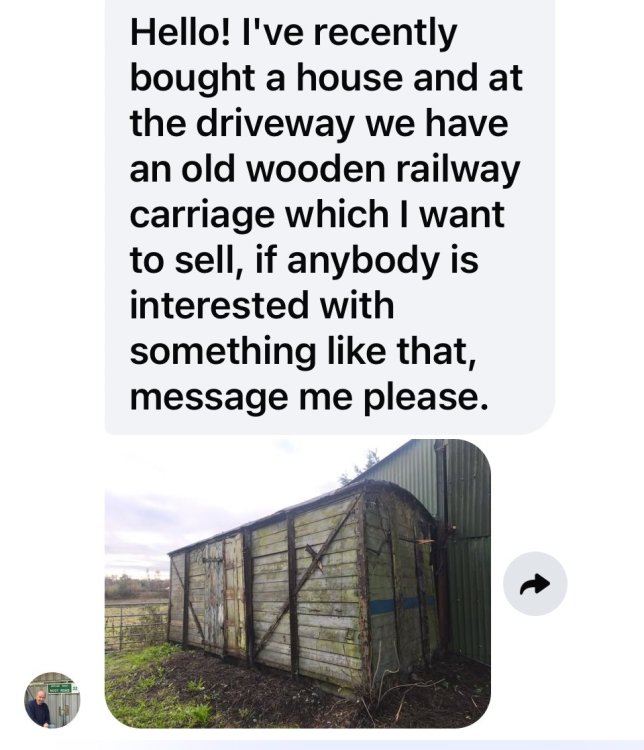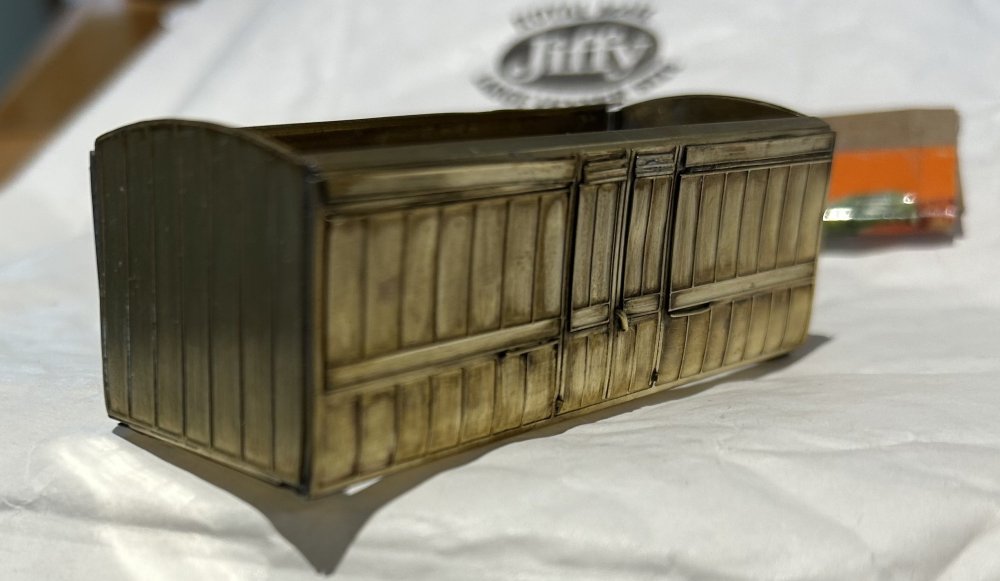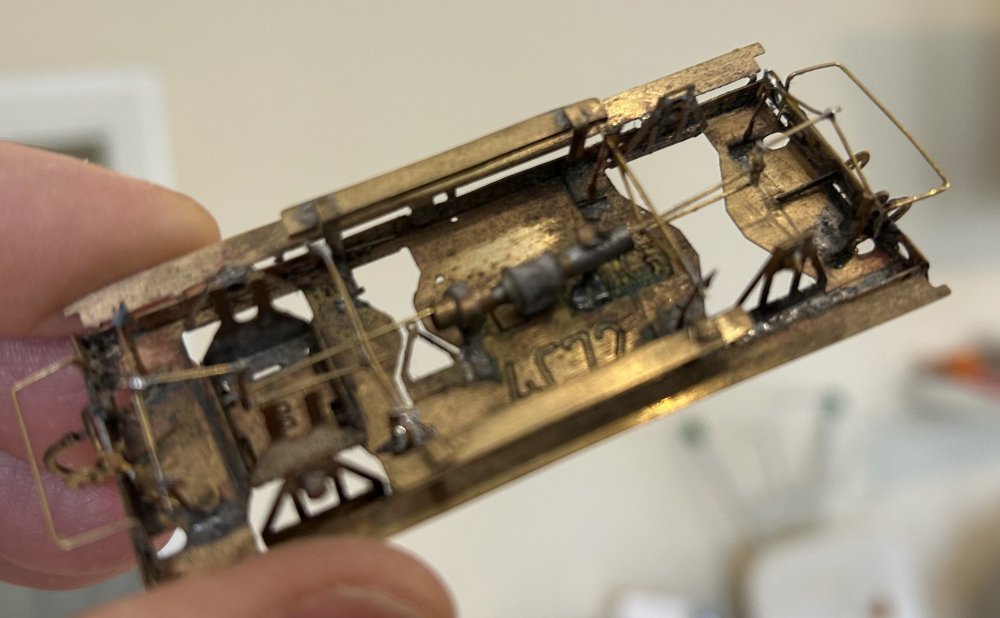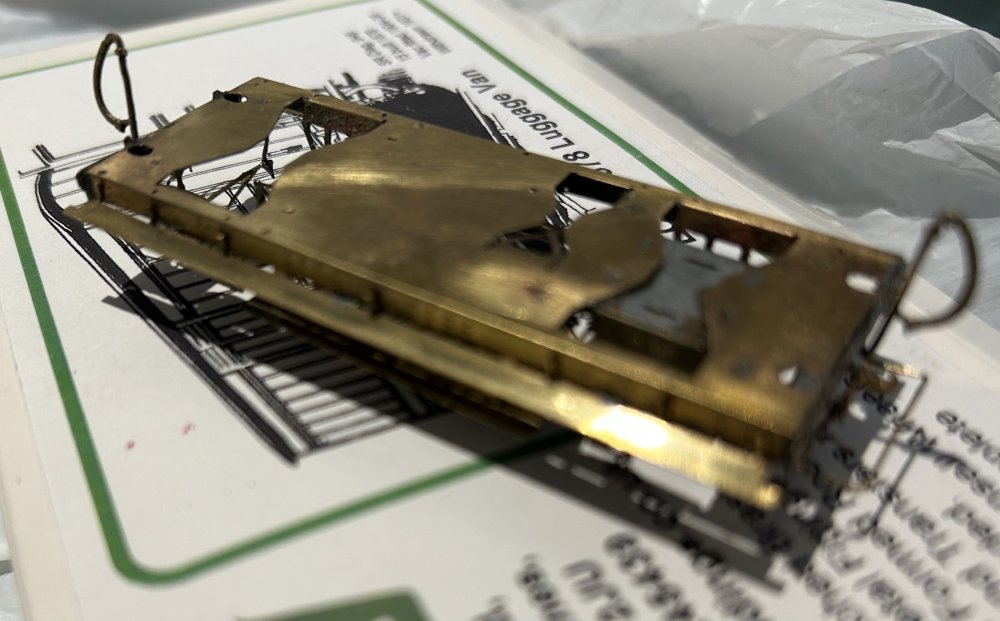-
Posts
15,831 -
Joined
-
Last visited
-
Days Won
393
Content Type
Profiles
Forums
Events
Gallery
Blogs
Store
Community Map
Everything posted by jhb171achill
-
I’ve code 75, which means three old coaches I have can’t run till I get better wheels for them….
-
-
Irish Railway News ‘Enterprise Watch’
jhb171achill replied to IrishTrainScenes's topic in General Chat
My favourite RPSI loco! -
141 and 181 Class Fleet Withdrawal and Scrappage Dates
jhb171achill replied to 228RiverOwenboy's topic in General Chat
Interesting stuff! 2011, thus, closed my personal chapter of interest in operational locos. 145 and 150 were personal favourites - the former, as I watched it shunting the Limerick - Sligo goods in Tuam, and the latter on account of a cab run to Cobh, only the 2nd time I ever went there. 190 my favourite 181, as I did Limerick - Ballina behind it, with a train of two laminates and a bockety-looking 4 wheeled tin van not long before that service was withdrawn…… -
Irish Railway News ‘Enterprise Watch’
jhb171achill replied to IrishTrainScenes's topic in General Chat
No blue 4.4.0s on it today? (I remember the last blue 4.4.0 on the Thursdays only train - travelled on it too….) -
This whole layout look so realistic!
-
Pure white when new, but white does tend to age, and it's there some 65 years now!
-
800 is exact, and fresh, as CIE gave it a repaint in standard green (which was still being used on buses and lorries) before it was sent to Belfast. A myth grew up in Belfast that it was (is) in GSR green in the museum….but this is obviously nonsense!
-
I couldn't agree more. As one who has been there the odd time to do a talk, I'm always delighted to go. Good to catch up with the Irish contingent living over there too - you know who you are!
-
Let’s hope that’s not what the RPSI matched the colours for 134 with…. although, by happy coincidence, they both look much the same shade…. Very few nowadays who remember the original 121 livery. It only lasted a few years anyway - several were repainted black’n’tan within only 2 or 3 years. I certainly don’t remember it - my earliest memories of those engines were standard black’n’tan, yet I remember the older green on many another thing.
-
This could vary.... However, 656 and 660 appear to have been working out of Mullingar in the mid 1940s and probably later too. The late Jack O'Neill wrote about firing on a turf train double headed by these two. 666 ("The Beast") spent a period in the 1950s on the DSER. Prior to 1950, they were almost never to be seen off the ex-MGWR lines.
-
Yes, you're right - it was a "local" job, though as likely to be Glanmire Road or Limerick as Rocksavage. There was a set of old GSWR coaches brought in to the West Cork section after a while lot of old knackered CBSCR stock was withjdrawn in the early CIE days. However, initially they were proper lined green, as shown in the very forst photo, and the second carriage in the last (colour) photo. Any repaints afetr that tended often to be plain DARK green. I've a couple of vehicles on Dugort Harbour done like that. Usually they had no snail either. The photo you have up there of 8B, a 33ft bogie, was one of only two done like that; no lining, but two snails, and painted on, not the normal gold-lined pale green transfers. Both were local Cork jobs. WHY am I only seeing this post NOW!! Absolutely TOP class work. What is the kit?
-
Vehicles like this are definitely of mid-1880s to 1910-15-ish origins.
-
New Announcement - Y33 Wagon Bogie Packs Now In Stock!
jhb171achill replied to Warbonnet's topic in News
Correct. -
Standard GNR goods van, 1940s build, I’d say. Now; This is apparently near Ballinasloe. One of the GSR’s “high vans”. Common enough at one time, but exceptionally rare animals today.
-
Standard GNR goods van, 1940s build, I’d say.
-
And I only burned my finger twice….
-
This is a London & South Western Rly. Parcels Van, somewhat similar to several the fewer had in the 1875-1920-ish period. I have been beavering away in terms of learning the dreaded brass kit building skills. It puts many off, but with care is easy enough under the right teacher, which I have! This thing is now ready for cleaning and painting. In my world, one was sent down to Wisht Kerry, boy, though in reality few lasted into CIE times, and only then as little used, little seen, departmental tool vans. I just liked the look of it, and thought that on a fair day at Castletown, a yoke like this mixed in with two unlike 6-wheelers, a Bredin and a few cattle trucks on the back, would very much look the part. Go easy on me if examining detail - it’s only my 2nd attempt at brass! The finish will be CIE green with snail, heavily weathered in the older livery. Next, I'm tackling a Bredin bogie full brake. Wish me luck……!
-
"Voiding the Warranty" - Mol's experiments in 21mm gauge
jhb171achill replied to Mol_PMB's topic in Irish Models
Dirty grey it seems, yes! -
Maybe that's a good back-story for why it ended up being sent to a remote outpost in West Kerry! As an aside, there were other cases of crews not liking certain locos for superstitious, rather than operational reasons. Midland 2.4.0 No. 666 was nicknamed "The Beast" on account of the biblical tale about the "number of the beast" being "666". Thus, some crews saw it as bad luck, as this biblical "beast" is meant to represent the devil.
-
"Voiding the Warranty" - Mol's experiments in 21mm gauge
jhb171achill replied to Mol_PMB's topic in Irish Models
The late Bob Clements gave me quite a lot of info on this, along with some details of what was black. Most classes had no vlack examples but many did. He gave me a list of perhaps 15 or 20 locomotives which became black, but unfortunately I appear to have mislaid this over the years at some stage. If it ever turns up, I'll post the details here. This was his own list, not from any official source, so it is likely that unless this list turns up, there is no definitive list. What I HAVE found is his reference to later days, and this definitively settles it for the B4 "Bandon Tanks". Clements wrote in the early 1970s that the last three painted were B4 No. 464; J15 No. 193, and (Midland) J18 No. 593. These were repainted GREY. Thus the apparent blck on 464 on that West Cork touir was not black at all; it was the dark grey, doubtless well polished with oily rags. Therefore, no Bandon tank was ever black; one green, rest grey. WestCork, you mentioned the green Bandon tank(s). In the same note, Clements stated that 467 received green in 1947 and kept it, though it became very dirty. He does not mention any other enegine of this class in green. Three old 4.4.0s became green also; one each from classes D14, D12 & D4. I will fish out the RAL for the grey paint later. -
"Voiding the Warranty" - Mol's experiments in 21mm gauge
jhb171achill replied to Mol_PMB's topic in Irish Models
I believe so - right to the end of steam in early 1963, I think. -
"Voiding the Warranty" - Mol's experiments in 21mm gauge
jhb171achill replied to Mol_PMB's topic in Irish Models
Those photos, including one I haven’t seen before, certainly strengthen the case for it being grey, quite strongly. In terms of accuracy, a clean engine in later days of steam was a rarity. I have even seen pictures of what I know to have been green engines, that are so dirty they could be pink with yellow and white spots underneath, and nobody would be any the wiser. i have several grey locos 1 x SSM J15, 3 x 00 Works J15s, and very nice JM Design Midland 2.4.0. When new, they looked a bit on the light side, but they were definitely not, as the paint on them was accurately colour-matched with the only surviving sample of GSR / CIE grey that I’m aware of. i know that the manufacturers of the above went to painstaking lengths to replicate the original correctly. Once I had them weathered all changed; they look like a dirty black. I think even a satin finish of black really doesn’t look right unless it’s a loco we know was black - and there really weren’t that many of them. So I would go for grey, and weather it. The weathering on steam engines wasn’t just an accumulation of smoke, soot, brake dust and general wear and tear as found on other rolling stock. Engines were cleaned with oily rags which could be quite dirty, and had the effect of appearing to darken the grey paint. If anyone’s interested I have details of the RAL number somewhere, but it’s a very dark grey, not a light wagon-shade; significantly darker than 071s carry now. Occasional exceptions; senior told me of one of his customary wanderings around Inchicore Works in his teens (mid 1930s) when he saw two newly painted engines ready to back into traffic. One was standard dark grey all over, but the other was much lighter, more like a wagon grey, he said. At first he thought it was undercoat but it wasn’t. It was a J15. He said he never saw or heard of any other engine like that - and he saw the lot!
.png.c363cdf5c3fb7955cd92a55eb6dbbae0.png)





